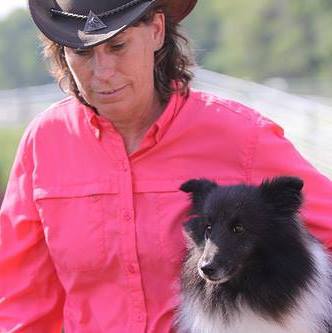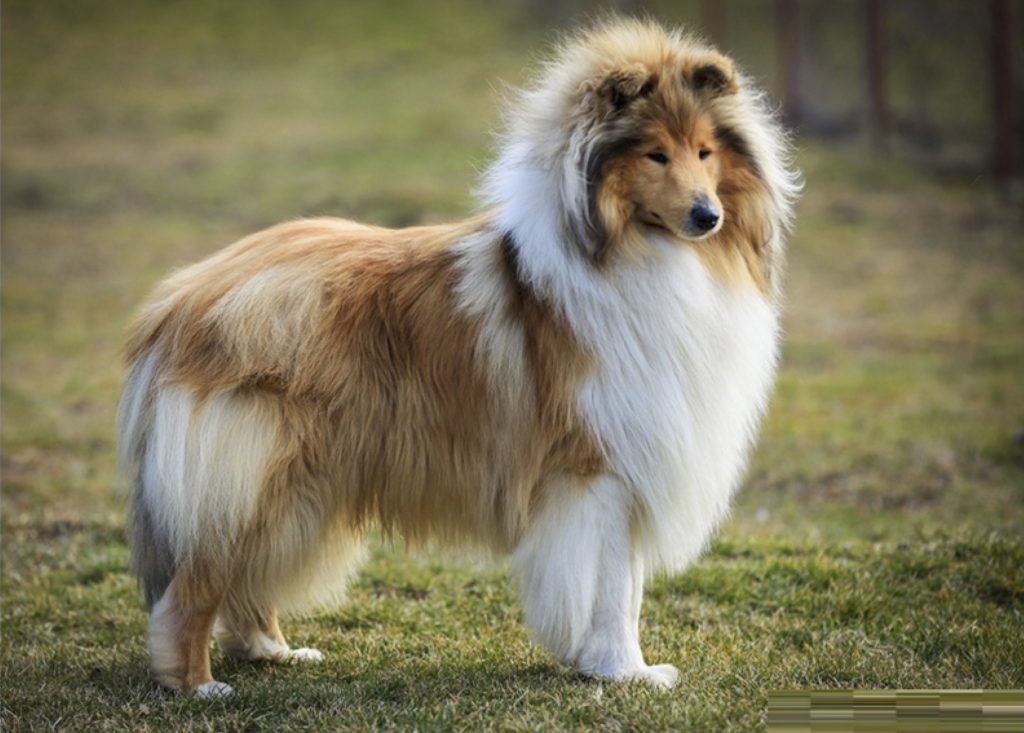291 – Shetland Sheepdog – Smart, Versatile, Adaptable
Shetland Sheepdog – Smart, Versatile, Adaptable
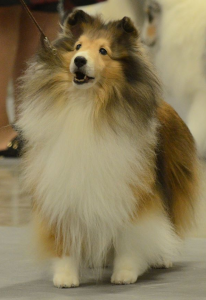
BISS Bronze GCh Solange Body Language, Flirt. Photo credit Cheryl Krajcar.
Host Laura Reeves visited the American Shetland Sheepdog Association National specialty for a multi-generational roundtable discussion of Shelties — what makes them good companions, fancy show dogs and fierce competitors in performance events.
The roundtable participants captured the breed beautifully. Shelties are “fancy for their size,” “athletic and eager to please,” “smart, versatile and adaptable.”
A long-lived, healthy breed, these experts said temperament and training impact how much vocalizing an individual dog will do.
While the experts agree that in years past, the quality of the sable color exceeded the others, today, they said, blue merle, tri and bi-black color dogs have improved in quality significantly.
Correct Sheltie expression, head planes and size are imperative to success in the show ring, our panel noted. They added that aspiring exhibitors need to be prepared for a “survival of the fittest” type commitment to the breed. A “young” breed, Shelties can be challenging to produce quality consistently, the panel noted, so new owners of show-potential pups are carefully screened.

ASSA Winners Bitch. Photo credit Cheryl Krajcar
According to “Shetland Sheepdog History” by Charlotte McGowan,
The history of the Sheltie is relatively recent and its earliest history is rather undistinguished. The Shetland Islands are remote and sparsely inhabited, although there is evidence of a long history as a stepping stone from Norway in ancient times. The general nature of the Shetland Islands, the windblown climate and somewhat sparse vegetation, have contributed to the miniaturization of livestock there in general. Because of the isolation of the Islands and the difficulty of making a living, animals there had to be very hardy.
The early native dogs were a very mixed lot but were generally very small, often 8-10 inches in height. It has been said that the ancestors of the dogs were Spitz type dogs brought from Scandinavia by early settlers, along with the large white Pomeranian, King Charles Spaniel, and smaller working sheepdogs from Scotland. The native dogs were rather inbred as no one kept more dogs than were needed for work.
The dogs were used to work Shetland Sheep, a small, extremely agile, almost goat-like breed. These original Island dogs were bred solely for utility. Because there are no fences on Shetland, the dogs did not do traditional sheep herding. They were used to drive sheep into rough stone enclosures so they could be dipped or “rooed,” as pulling the wool off them was called. They were also used to drive the rather wild sheep away from the crofter’s meager gardens. Another task was staying with the sheep on the more remote uninhabited islands in the summer. There they needed to be able to protect lambs from birds of prey like eagles, and traverse the seaweed covered rocks. The dog used its vocal abilities to bark at birds and scare them away. Barking was also a way to move sheep away from the croft and to locate the dog.
….
To continue reading this fascinating article, visit: https://www.americanshetlandsheepdogassociation.org/2016/07/08/shetland-sheepdog-history-mcgowen/
273 — Herding Dogs: “Eye,” Competition and Genetic Instinct
Herding Dogs: “Eye,” Competition and Genetic Instinct
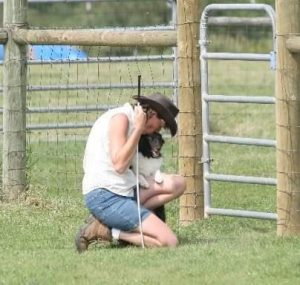
Tammy Van Deusen works with Shetland Sheepdogs in herding trials.
Herding dog trainer and Shetland Sheepdog breeder Tammy Van Deusen joins host Laura Reeves to share her knowledge.
“Give ’em the Eye”
We talk about “eye” contact, the way Border Collies and Kelpies control stock, versus “loose eye” breeds such as Shelties and the Belgian breeds, that control the stock with their movement. Van Deusen takes us through all of the testing options, what they are and how to train for them. And most importantly, she talks about the loss of genetic instinct in herding breeds.
Van Deusen’s first advice is to find a good instructor. Check out the facility before you sign up, she said. She works with clients who want to see if their dog has herding instinct. She’ll often give them three to four lessons with her “school sheep” to see if the dog will “turn on” to stock.
If the dog doesn’t have a lot of drive on stock, Van Deusen said, it can still be successful in other performance sports like agility and obedience.
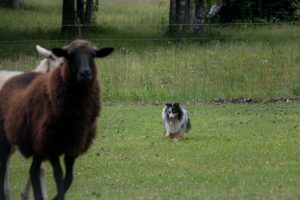
A Sheltie working stock to bring them to the handler.
One of the characteristics Van Deusen is looking for in the dogs is whether they are just chasing versus herding the stock to turn and bring it to you. “Too much prey drive won’t make a good herding dog,” she noted.
Start proving natural instinct
Different breeds work stock differently, Van Deusen said. Certain breeds, like Rottweilers and Corgis, are considered “drovers” – driving the stock forward. Border Collies and Kelpies, with their intense “eye” and low bodies were developed for working huge fields of stock to gather and bring *toward* the handler. The basic farm dog breeds, like Shelties, Tervuren and others, were developed to serve a more multi-purpose function.
“Herding judging should be about the sheep,” Van Deusen said. “They’re looking at the path the sheep are taking, are the sheep calm, more so than the dog. How the stock is moving is what the dog is doing. A good herding run is like watching paint dry. Running stock is running meat off the animals and stressing them out. A dog that works too fast, too intense, loses the rancher money.”
Genetic loss of performance skills and inherited instinct
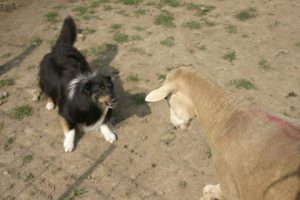
Shelties work are considered “loose eye, upright” herding breeds who work stock with their movement instead of intense eye contact.Border Collies have been bred for one thing for thousands of years, Van Deusen noted. As such, the breed’s basic instinct remains strong.
“A lot of breeds, people don’t care anymore about the herding piece,” Van Deusen said. “In two generations, you can lose instinct. I don’t think people realize that.”
246 – WSU Researcher Discovered the MDR1 Gene that Saves Lives
Meet the Researcher Who Discovered the MDR1 Gene
Herding dog owners everywhere should know their dogs may be sensitive to ivermectin, the powerful antiparasitic drug common in most worming medication. Now you can hear directly from the researcher who discovered the MDR1 gene mutation that causes this reaction.
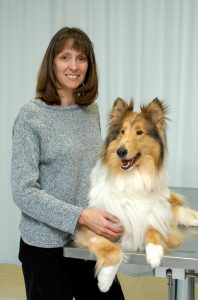
Dr. Katrina Mealey, Ph.D, DVM, WSU Researcher, who discovered the MDR1 gene mutation.
Washington State University’s Dr. Katrina Mealey, Ph.D., DVM discovered the gene literally by serendipity. While studying for her advanced degree, she encountered a journal article from the Netherlands. The article discussed treatment of a routine case of mites in laboratory mice, some of which had been engineered to remove the MDR1 gene. All of the mice who were missing the gene died from the treatment.
This caused Mealey to begin research to locate the gene in dogs.
From the WSU Foundation: “Mealey had barely graduated from high school when the antiparastic drug ivermectin came on the market, which quickly became known as a super-weapon for animals and humans against parasites, such as mites, heartworms, and lice. In a small percentage of certain dog breeds, however, veterinarians found an ivermectin treatment could prove fatal. While the antiparastic could cure a poodle, it might kill a collie. Based on those results, veterinarians followed the guideline, ‘White feet; don’t treat.’ But, no one really understood the why behind the differing responses.”
Mealey also invented the cheek swab that tests whether dogs carry the MDR1 gene mutation or not.
“Seventy five percent of Collies have the MDR1 gene mutation that makes them susceptible to fatal reaction to antiparasitic drugs like ivermectin,” Mealey said. “Whereas, Shelties only have 10 percent of the population affected.”
Dominant mutation
The MDR1 mutation is a dominant trait, Mealey added. If a dog has one copy of the gene, it will have drug sensitivity. If it has two copies, it will have more severe sensitivity.
Mealey’s ongoing research has indicated that dosage is the critical component to sensitivity. The low-level dosage of ivermectin contained in heartworm treatment is generally safe, she said, but the super high doses required to treat mange, for example, can be deadly.
Mealey has found the mutation in Silken Windhounds and even a very small number of Boxers.
Early effect of popular sire syndrome
According to extensive research at UC-Davis, Mealey said they have concluded that the MDR1 mutation originated in a herding dog before specific breeds were established.
“They theorize this was a dog particularly good at herding sheep, that became a popular sire. By the time breeds were established in the British Isles, they all carried this mutation,” Mealey said.
Researchers have not identified the mutation in herding breeds that originated in other parts of the world. It is seen primarily in Collies, Shetland Sheepdogs, Old English Sheepdogs, Australian Shepherds, etc.
For more information on Mealey’s work, check out: https://foundation.wsu.edu/2018/04/03/dogs-best-friend/


